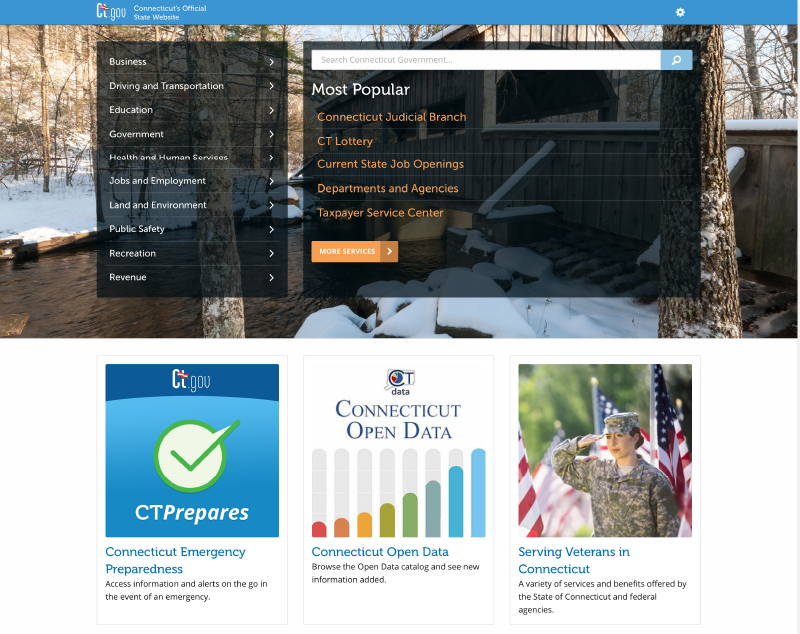
The main goals of the project were to move the current website off a very old system and onto a new one. In addition, we updated the design and branding to bring in more modern elements and to make it mobile friendly.
We began doing research learning and understanding why we were changing the site, who the audience was, what the stakeholders were looking for, what changes did they want to see and what was working and what wasn't.
Since the site hadn’t been updated in about 15 years, there was old and outdated code and though it was accessible, didn’t include all the advances made with website accessibility.
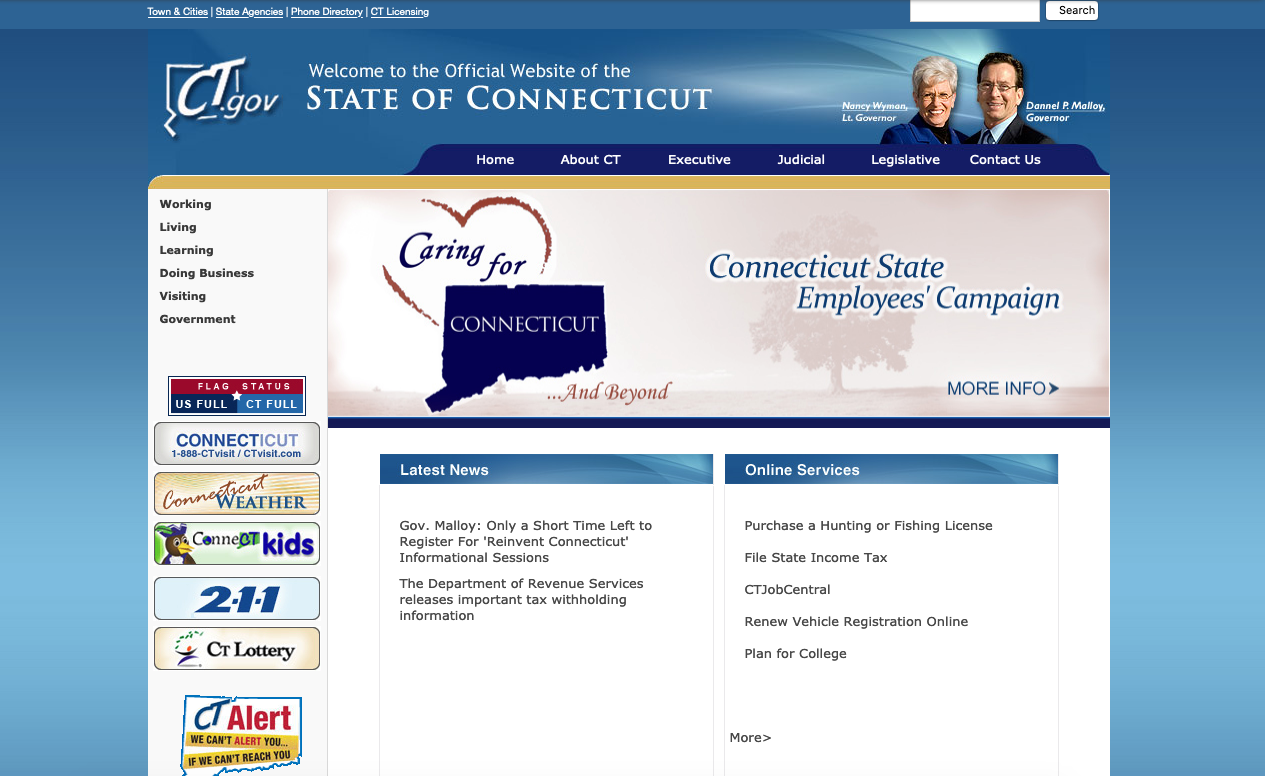
CT.gov 2012
We wanted to take a different approach with the update what we called the unified approach. It was similar to the concept for Gov.uk. They blended the lines between their government entities so citizens didn’t need to know anything about government but only the service they were looking for. Everything had the same look and feel. It created a seamless interaction for the citizens.
We were lucky enough to speak with a few from the team who worked on Gov.uk to learn about their process and methodology. It was a wonderful and exciting experience and we learned a lot.
From those calls and meetings, we began organizing the content under new headings. The goal was to be able to create categories to organize the content in a simpler, more meaningful way.
We wanted to take the site into a direction where links were large and obvious. The content would start generic and then funnel the user down to more specific categories under the main headings.
We also worked with the state and tourism on creating a new brand. It stemmed from a promotion tourism was working on and the direction they wanted to take the state from a marketing perspective. The brand included a new logo, color scheme and fonts. We created a few style tiles with some different elements keeping with the same general theme.
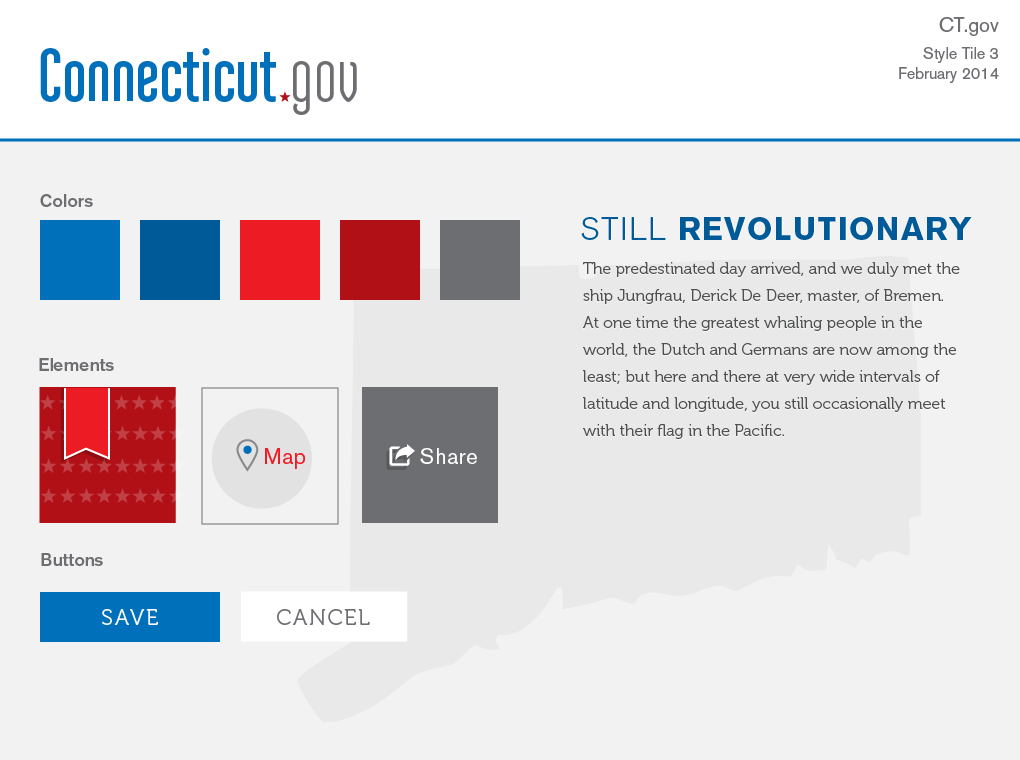
Sytle Tile Brand Concept. Designed in collaboration with the Design Director
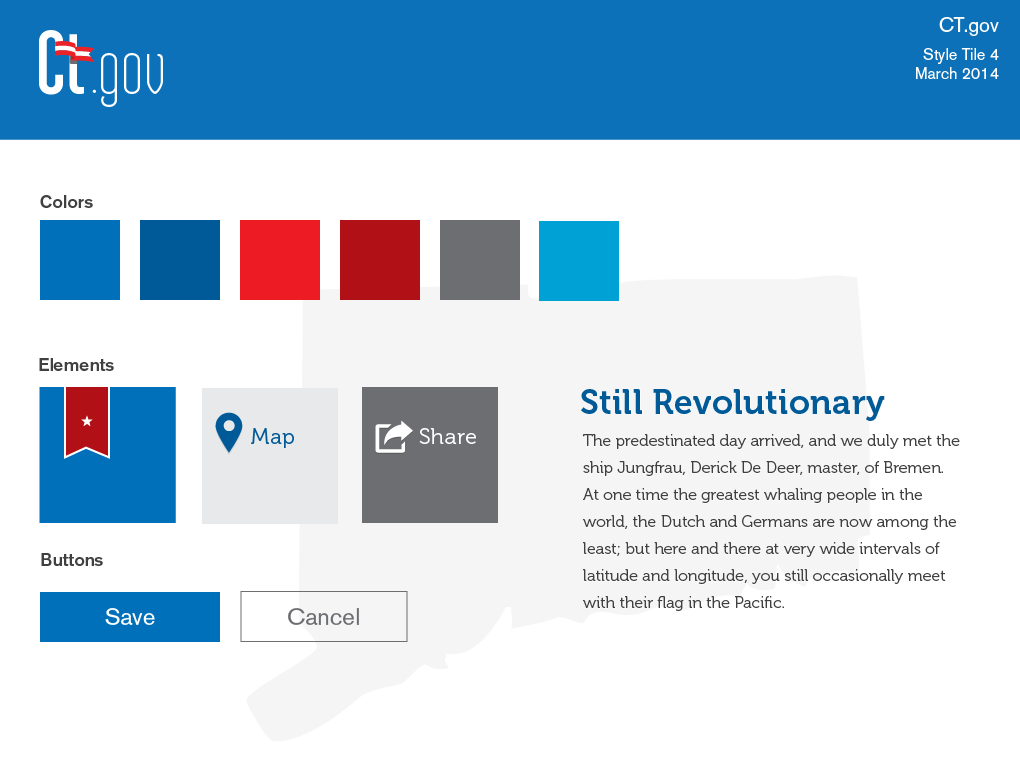
Sytle Tile Brand Concept. Designed in collaboration with the Design Director
To get started with the process, we conducted a complete content audit of the website. We mapped out every page and every section. We looked at what pages weren't needed anymore, what needed to be updated and any new content that was needed. We looked at google analytics and what pages had the most traffic and what didn't. Once we reviewed everything, we created a site map.
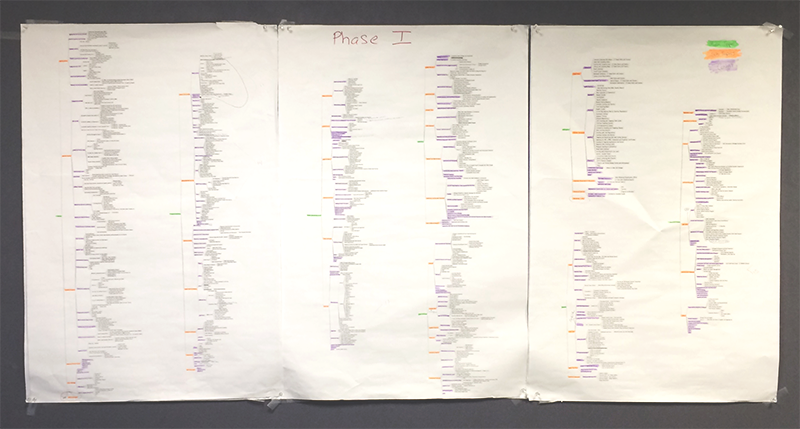
Architecture layout of the entire site
The site map was key to understanding all the content we had to represent and understanding the content provided guidance for the design elements needed.
We went through many designs and layouts. I think at least 15 different version were created. We tested a few designs with user groups and from the feedback, continued to make adjustments. Additional changes were made with stakeholder input.
Once we came to two designs, we performed A/B testing to see which preformed better.
Both designs tested well with the blue boxed design performing slightly better. Based on that and stakeholders input, the final design chosen was the boxed layout.
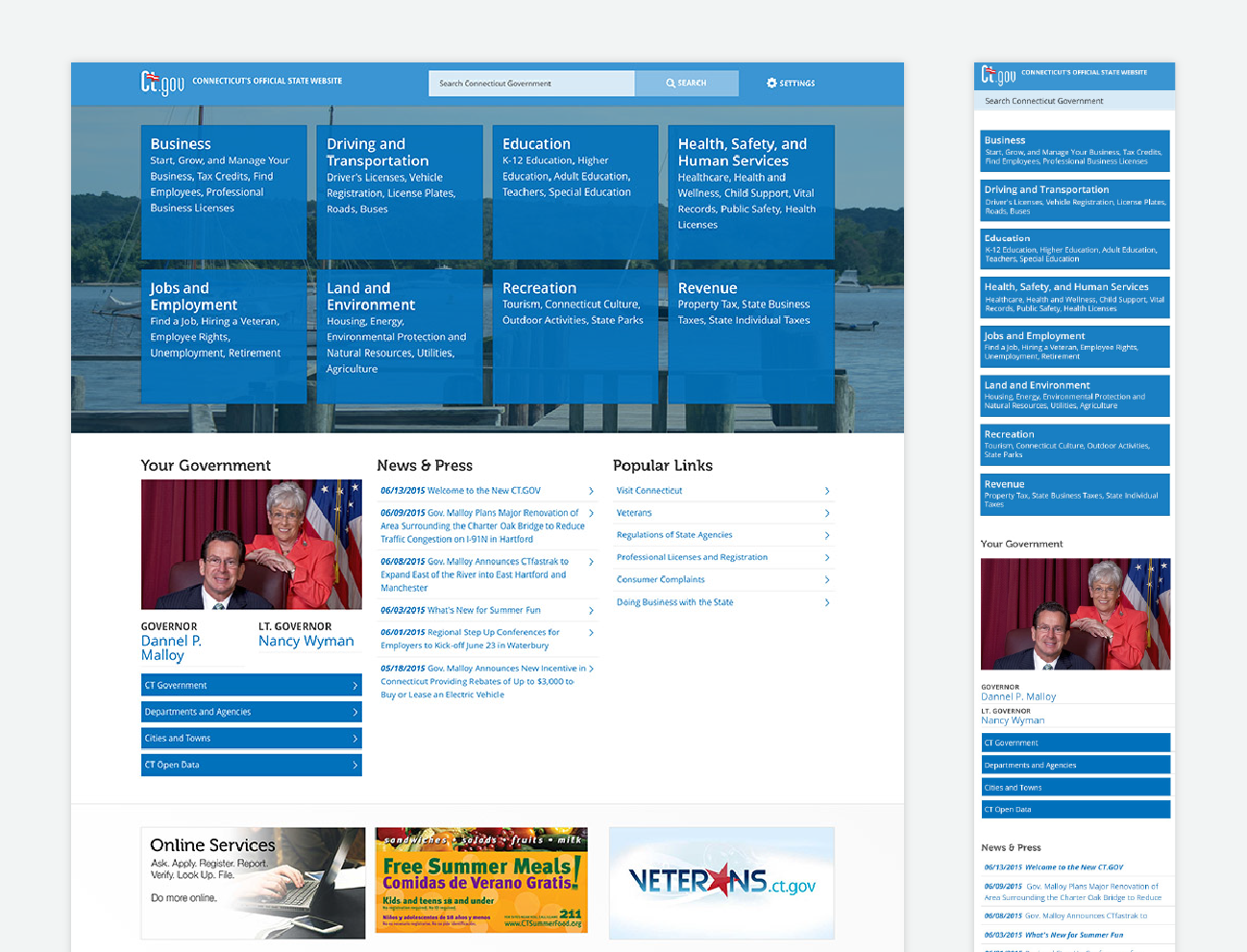
CT.gov 2015
At the time we launched, the content management system we were working with was purchased by another company and became decommissioned. Since the site was pretty much ready to go, it was decided to launch in the current decommissioned system. Immediately after the launch, we started working on researching and procuring a new CMS.
Over the following year, we decided on a new CMS and began the process all over again. In addition to moving to a new system, it was decided to give the look and feel an update as well.
We identified all the pages currently on the site, analyzed the different layouts and reviewed the content. Understanding what we have was key to know where we wanted to take the design update.
We had been gathering and reviewing google analytics and survey feedback on how the new site was performing. Some feedback we received was:
The main update we wanted to make was to create an easier navigation design. We reworked the site architecture and identified areas we could remove, making it more streamlined.
Review of current pages
After reviewing pages and the data, we started sketching out new ideas that included updated navigation. For interior pages, we wanted to go with a more traditional pagination. This would give users an idea for the depth of content and a reference to where they are on the site.
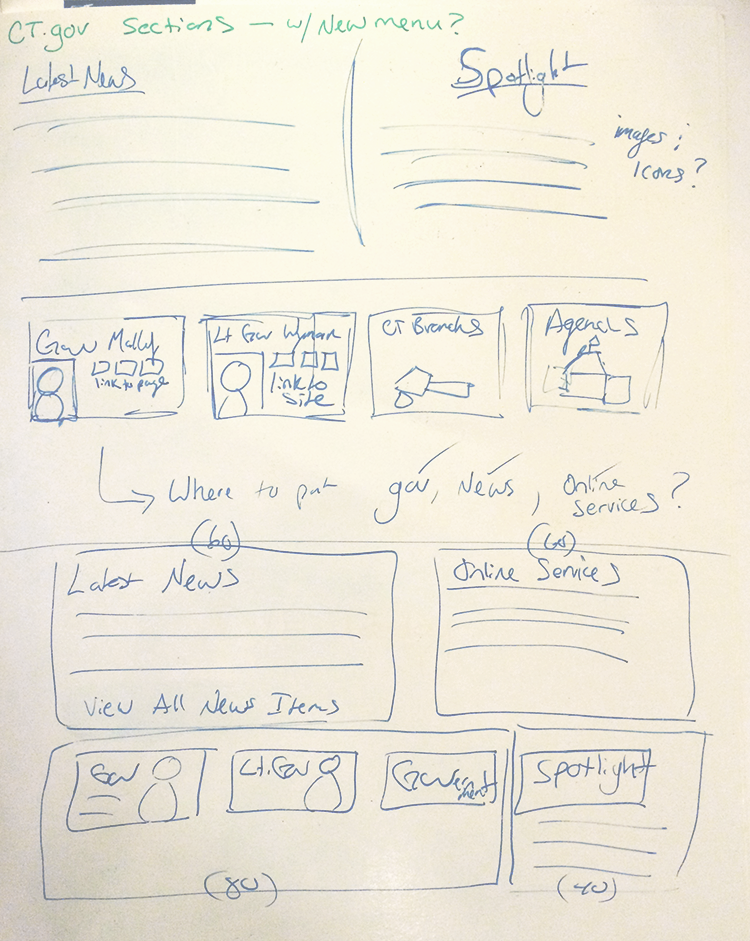
Early Sketches
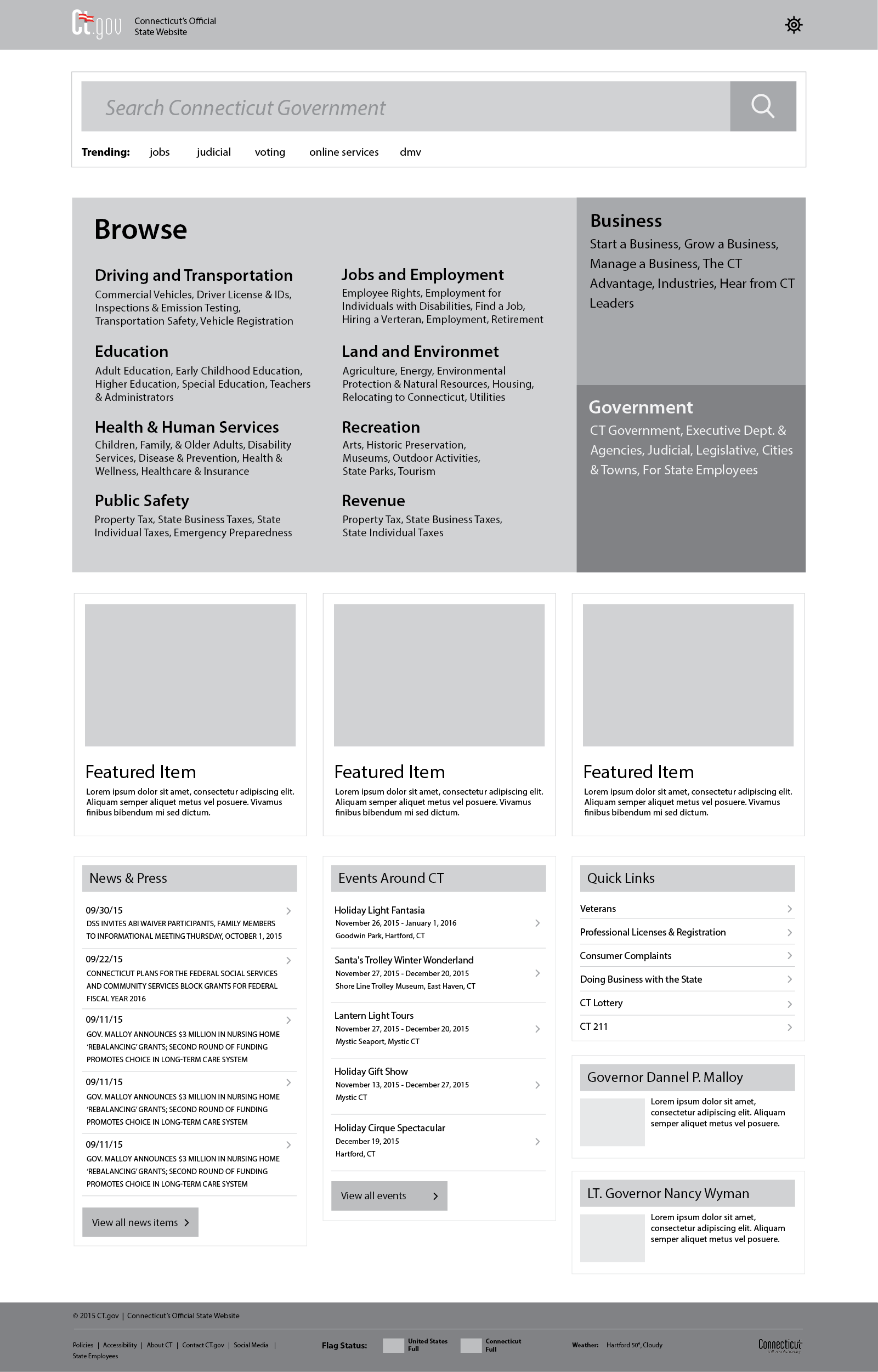
Wireframe concept of home page
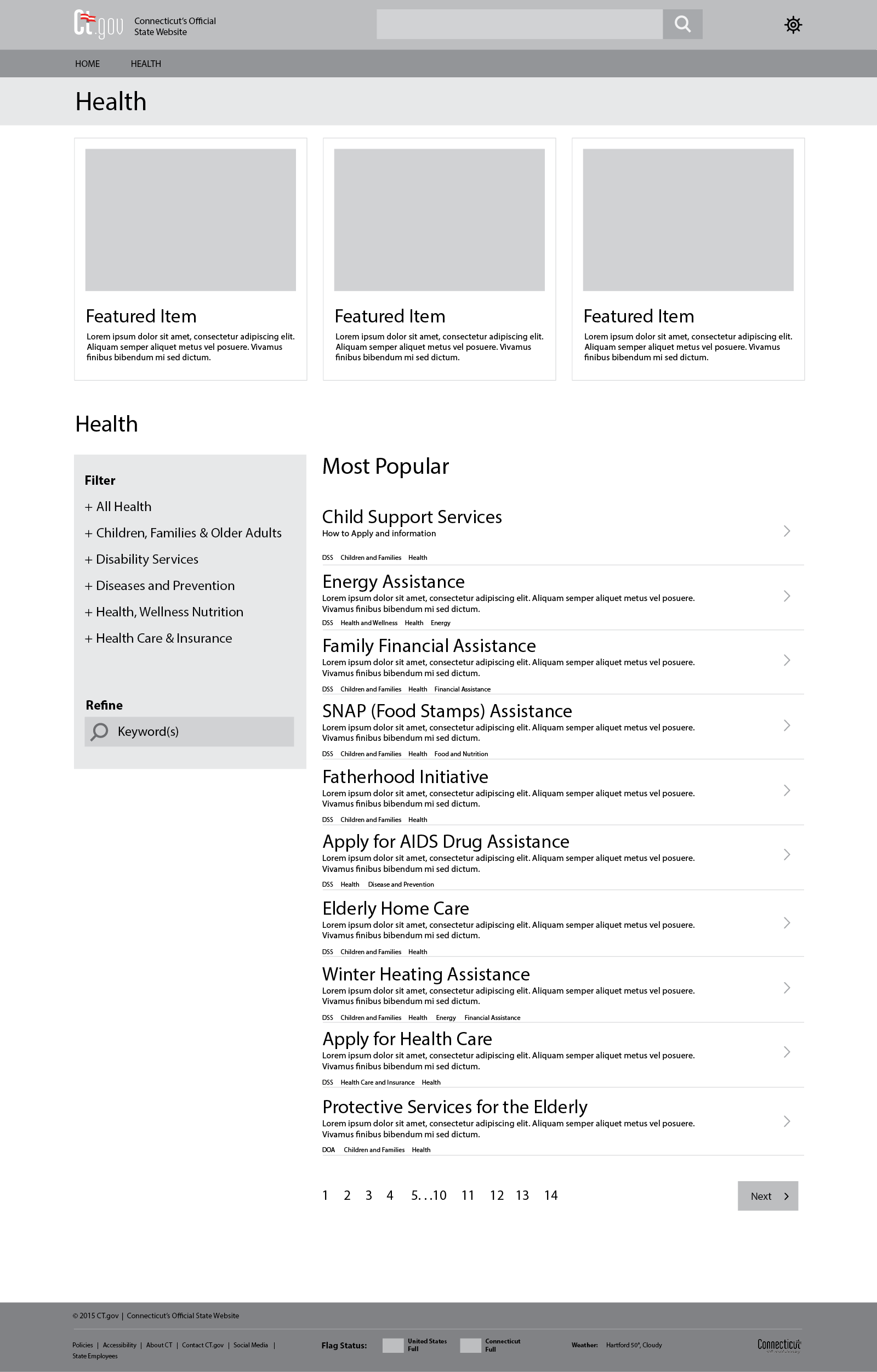
Wireframe concept of secondary page
Once we had a few ideas agreed on by stakeholders, we conducted user testing to learn if the decision we made would indeed be more useful to the user. Testing on early wireframes provided some useful feedback. Some of the feedback was:
We also got a lot of positive feedback with the updated layout vs the original blue box design. Many thought it was updated and modern. Users also stated the content looked informative and understood the simple language.
We made some further updates based on this testing and with stakeholder approval, we landed on a final design.
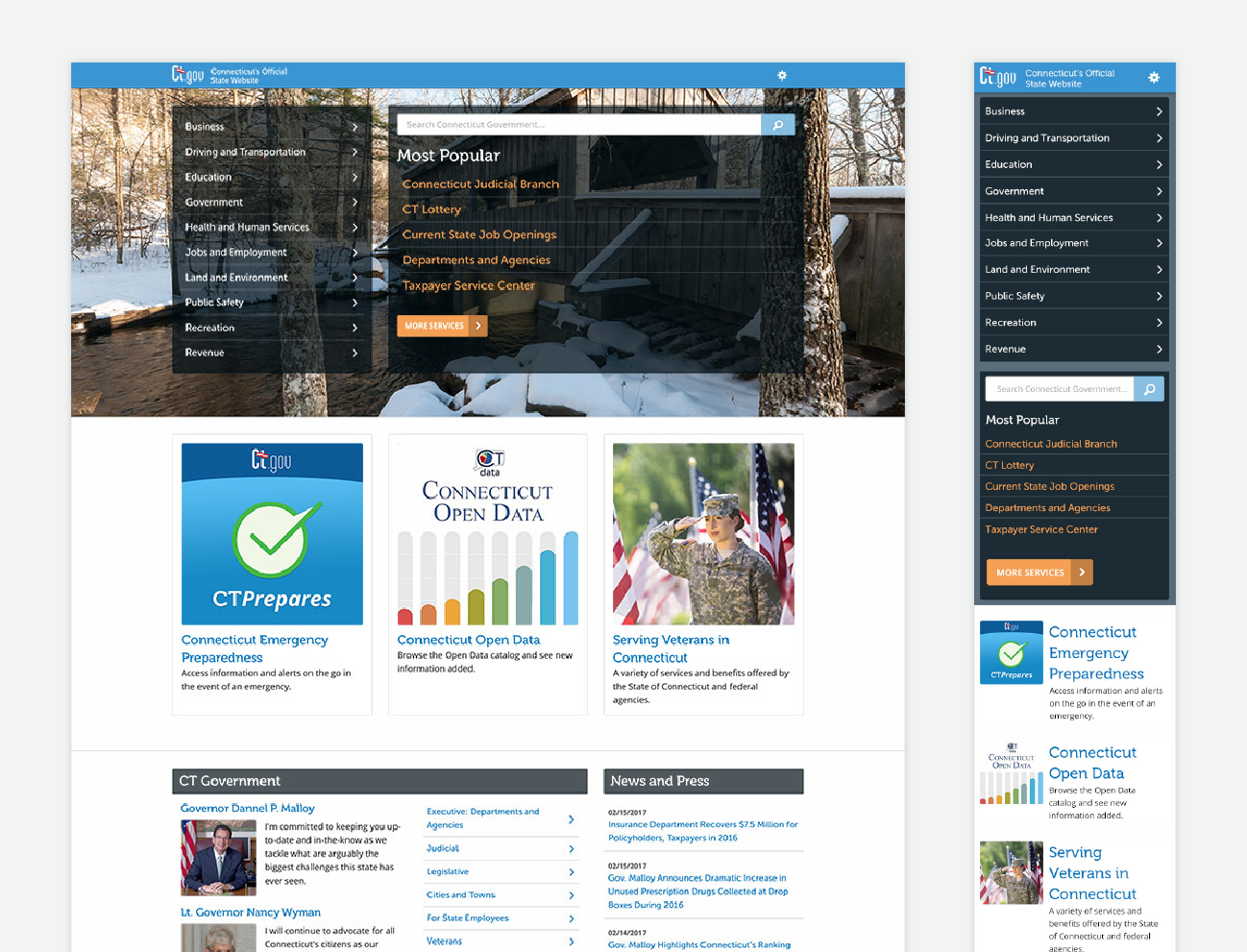
CT.gov 2016